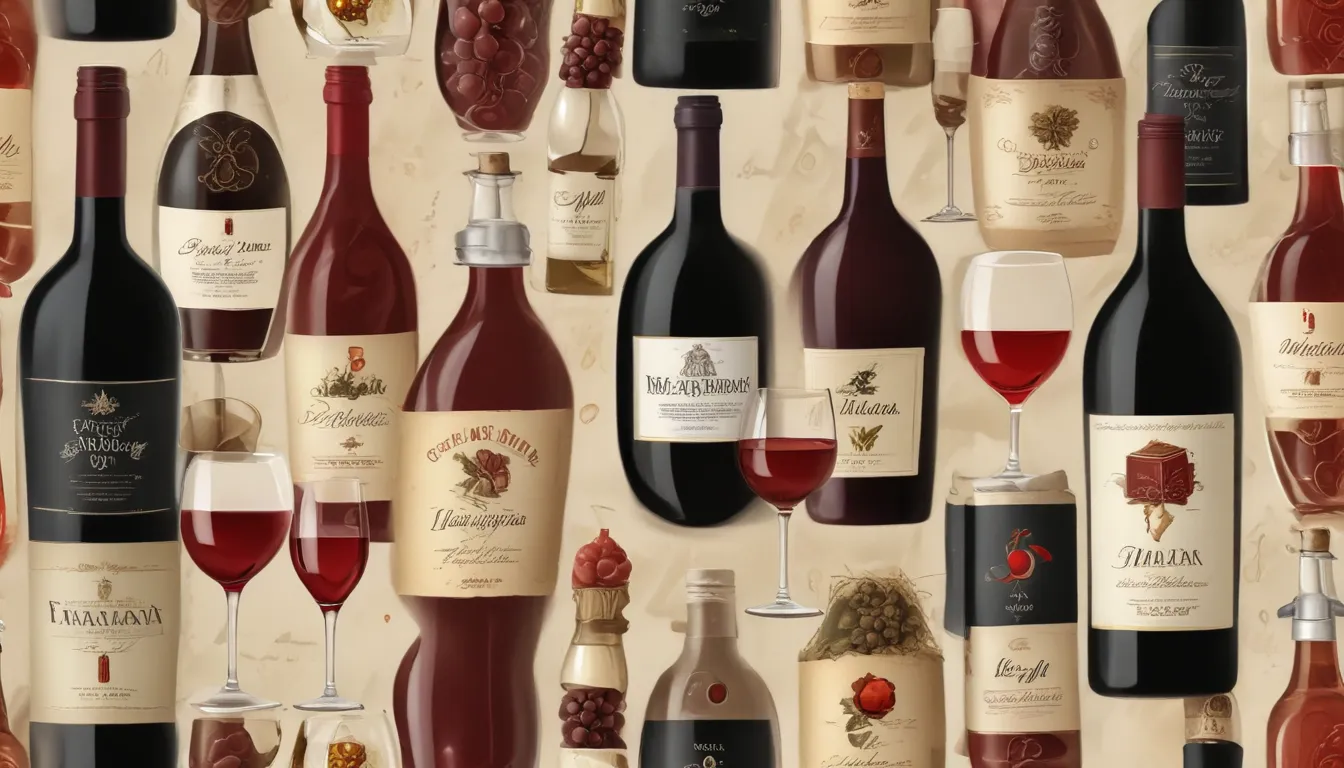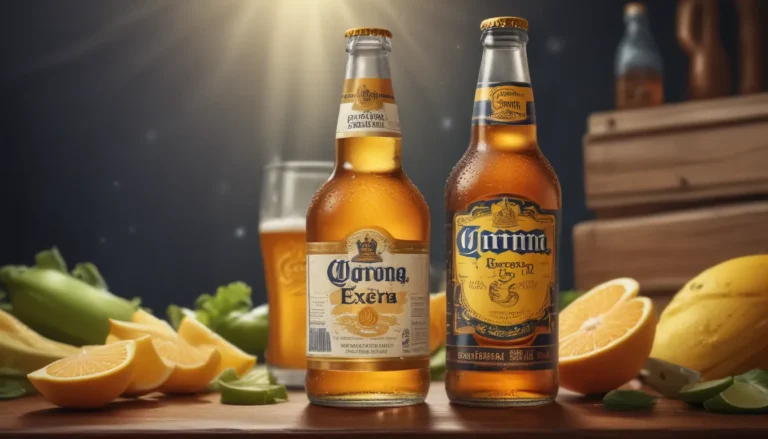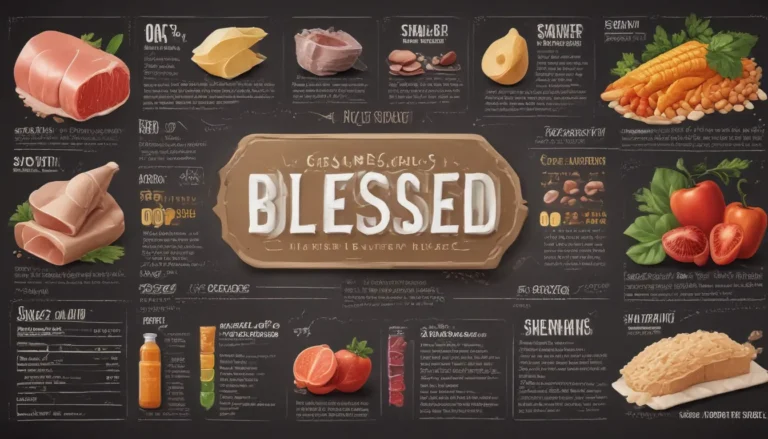The pictures in our articles might not always show exactly what the text is talking about. We use these images to make the article more interesting and eye-catching. They are there to add to the text, but not to replace it or show every detail.
Italy has a long-standing reputation for producing exceptional wines that capture the essence of its rich winemaking history and diverse regions. With over 2,000 grape varieties, 20 wine regions, and a global presence, Italian wines are celebrated for their quality, flavors, and unique traditions. Whether you are a wine aficionado or simply enjoy a glass of vino with your favorite Italian dish, exploring the world of Italian wines is an enriching experience. Let's embark on a journey through 20 captivating Italian wine facts that will deepen your appreciation for this beloved drink.
The Rich Heritage of Italian Wines:
Italy boasts a wine culture with a heritage dating back centuries, showcasing its dedication to quality and tradition. With iconic grape varieties and unique winemaking techniques, Italian wines are a treasure trove of flavors and history.
1. The Oldest Winery in Italy:
The Abbazia di Novacella winery in Alto Adige is believed to be the oldest winery in Italy, producing wines for over 878 years since 1141.
2. The Champion of Wine Production:
Italy proudly holds the title of the world's largest wine producer, thanks to its diverse wine-growing regions and grape varieties.
3. Vino Nobile di Montepulciano:
This renowned red wine from Tuscany's Montepulciano town, primarily made from Sangiovese grapes, is known for its bold flavors and aging potential.
4. The Sparkling Marvel - Prosecco:
Italy's most famous sparkling wine, Prosecco, hails from the Veneto region and is cherished globally for its refreshing taste and versatility.
5. The Diversity of Italian Grapes:
Italy boasts over 2,000 indigenous grape varieties, ranging from well-known classics like Sangiovese and Nebbiolo to unique treasures like Teroldego and Gaglioppo.
6. The King of Wines - Barolo:
Barolo, produced in Piedmont, is often revered as the "king of wines" for its complex flavors, robust tannins, and exceptional aging potential.
Exploring Italian Wine Traditions:
Italy's winemaking traditions are as diverse as its landscapes, with each region showcasing distinct qualities and flavors that reflect the country's terroir.
7. The Origins of Chianti:
Chianti, Italy's famous red wine, must contain at least 80% Sangiovese grapes and is characterized by vibrant acidity and cherry notes, often presented in a straw-covered bottle called a fiasco.
8. Amarone della Valpolicella:
Crafted in the Veneto region, this unique red wine is made from dried grapes using the appassimento technique, resulting in a rich and concentrated flavor profile.
9. The Role of Cooperative Wineries:
Italy is home to 474 cooperative wineries that play a significant role in bringing together small grape growers to produce high-quality wines collectively.
10. The Prestigious Brunello di Montalcino:
This Tuscan red wine, made exclusively from Sangiovese grapes, must age for a minimum of five years, with at least two years spent in oak barrels.
11. Italy’s Wine Quality Classification:
Italian wine labels often indicate the wine's quality level, ranging from basic table wine (Vino da Tavola) to the highest quality designation (Denominazione di Origine Controllata e Garantita).
12. The Super Tuscan Revolution:
In the 1960s, Italian winemakers challenged traditional norms by creating non-traditional blends known as Super Tuscans, using international grape varieties and defying conventional winemaking laws.
The Enchanting World of Italian Wines:
Italy's wine regions offer a diverse tapestry of flavors and traditions, inviting wine enthusiasts to explore the nuances of each terroir and grape variety.
13. The Allure of Moscato d’Asti:
This sweet, sparkling wine from Piedmont delights with vibrant flavors of ripe peaches and apricots, making it a popular choice for dessert or fruit pairings.
14. Delving into Italian Wine Regions:
Italy is home to 20 distinctive wine regions, each with its own winemaking traditions and grape varieties, from the renowned Tuscany and Piedmont to hidden gems like Umbria and Friuli-Venezia Giulia.
15. The Charm of Italian Spumante:
Italian sparkling wines, known as Spumante, range from the crisp Prosecco to the rich Metodo Classico wines like Franciacorta and Trentodoc, offering a spectrum of styles to enjoy.
16. Italy’s Global Wine Presence:
Italy exports its wines to over 190 countries, showcasing the global demand for Italian wines and establishing its position as a leading wine exporter.
17. Piedmont’s Noble Wines:
Barolo and Barbaresco, made from Nebbiolo grapes in Piedmont, embody the region's terroir and winemaking traditions, capturing the essence of Italian elegance and craftsmanship.
18. The Age-Worthy Amarone:
Amarone, crafted in the Valpolicella region, is prized for its full-bodied flavors and aging potential, with the ability to age for several decades, enhancing its complexity over time.
19. Coastal Tuscany’s White Wonders:
The coastal regions of Tuscany, including Bolgheri and Maremma, produce exceptional white wines like Vermentino and Vernaccia di San Gimignano, offering a refreshing taste of Italy's maritime influence.
20. Italy’s Bounty of Grape Varieties:
Italy boasts over 350 official wine grape varieties, showcasing a diverse range of international and indigenous grapes that contribute to the country's vibrant wine culture.
Embracing the World of Italian Wines:
Italian wines embody a blend of tradition, innovation, and passion that captivate wine enthusiasts worldwide, making them a delightful choice for any occasion.
Whether you are savoring a glass of Chianti with pasta or celebrating with a bottle of Prosecco, Italian wines offer a spectrum of flavors and experiences to explore. From the iconic Barolo to the vibrant Vermentino, Italy's winemaking landscape is a testament to its dedication to quality and diversity.
As you delve into the enchanting world of Italian wines, remember to appreciate the heritage, craftsmanship, and artistry that go into each bottle. Whether you are a seasoned oenophile or a curious enthusiast, Italian wines promise a journey filled with discoveries and delights.
Buon viaggio nel mondo del vino italiano! (Safe travels in the world of Italian wine!)
FAQs: Exploring Italian Wines
- What are some famous Italian wine regions?
Italy is renowned for wine regions like Tuscany, Piedmont, Veneto, and Sicily, each offering unique flavors and traditions. - Which Italian grape varieties are popular?
Popular Italian grape varieties include Sangiovese, Nebbiolo, Barbera, Montepulciano, and Prosecco, each contributing to Italy's diverse wine culture. - What foods pair well with Italian wines?
Italian wines complement a range of dishes, from pasta and pizza to grilled meats and aged cheeses, enhancing the dining experience with their flavors. - Are Italian wines only red or white?
Italian wines come in various styles, including red, white, rosé, and sparkling, offering a diverse selection to suit different preferences. - Are Italian wines expensive?
Italian wines span a wide price range, catering to different budgets and preferences, making them accessible to a broad audience of wine enthusiasts. - How should Italian wines be stored?
Italian wines should be stored in a cool, dark place away from sunlight and temperature fluctuations to preserve their quality and flavor profiles. - Can Italian wines be aged?
Many Italian wines, especially those made from Sangiovese and Nebbiolo grapes, have excellent aging potential, developing complex flavors and aromas over time. - How do I choose an Italian wine?
When selecting an Italian wine, consider your taste preferences, the occasion, and the food pairing to guide your choice, or seek recommendations from experts for a personalized experience. - What are the main wine classifications in Italy?
Italy categorizes wines into four main classifications: Vino da Tavola, IGT (Indicazione Geografica Tipica), DOC (Denominazione di Origine Controllata), and DOCG (Denominazione di Origine Controllata e Garantita), reflecting the wine's quality and origin. - Are Italian wines suitable for aging?
Yes, many Italian wines are suitable for aging and benefit from maturation, allowing them to evolve and develop nuanced flavors with time.
Conclusion: An Ode to Italian Wines
As we unravel the tapestry of Italian wines, we immerse ourselves in a world of flavors, traditions, and history that define the essence of Italy's winemaking culture. From the sun-kissed vineyards of Sicily to the rolling hills of Tuscany, each sip of Italian wine tells a story of craftsmanship, passion, and heritage.
Whether you are exploring the renowned regions of Piedmont and Veneto or discovering hidden gems in Umbria and Friuli-Venezia Giulia, Italian wines offer a delightful voyage of taste and discovery. From the iconic Chianti to the elegant Barbaresco, Italy's wines embody a spectrum of flavors and experiences that captivate wine enthusiasts worldwide.
So, as you raise a glass of Italian wine to toast to life's moments, remember the centuries of tradition, innovation, and artistry that culminate in each bottle. Let your palate be your guide as you embark on a journey through Italy's winemaking legacy, where every drop is a testament to the country's dedication to excellence and diversity.






